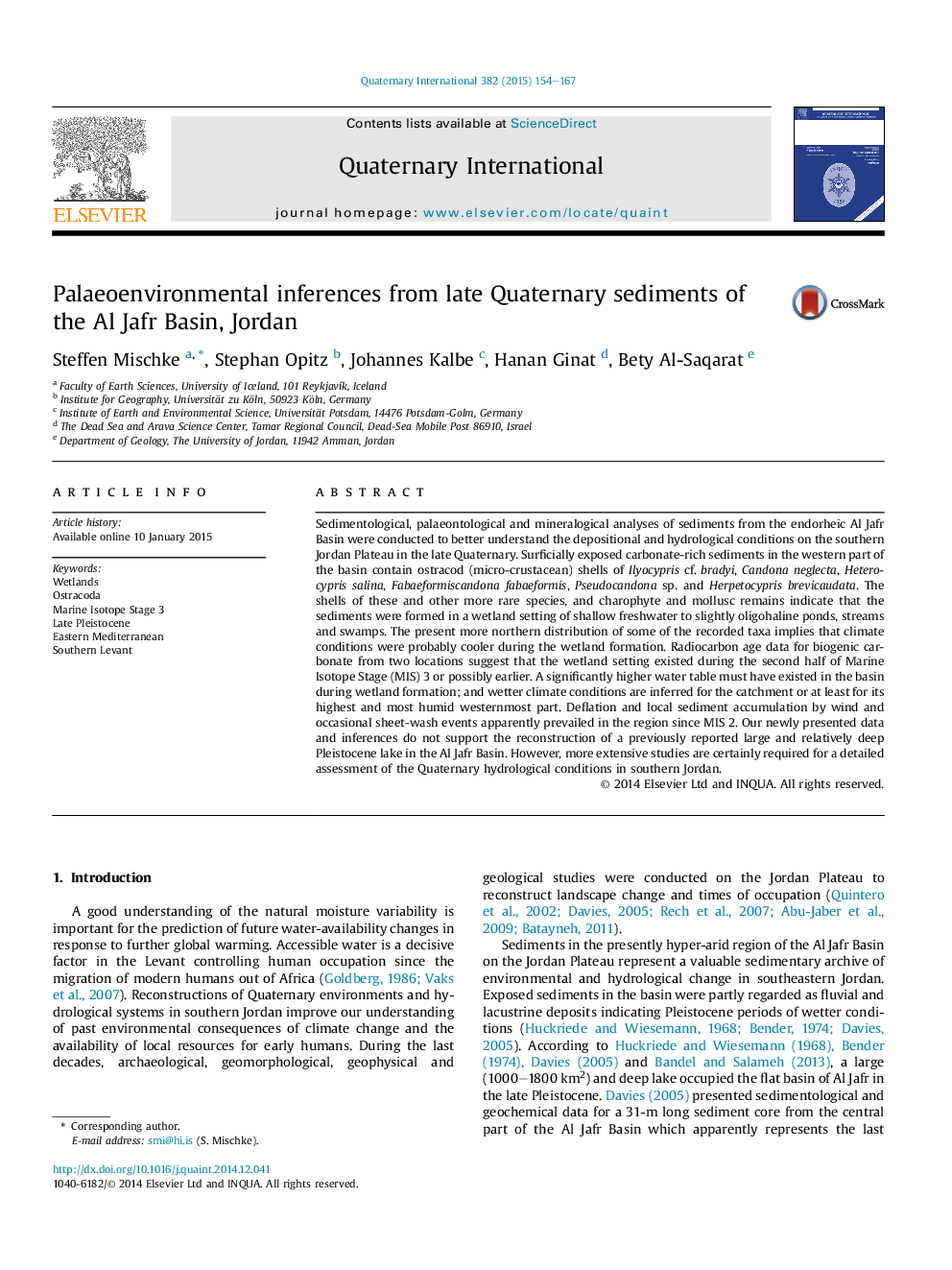| Article ID | Journal | Published Year | Pages | File Type |
|---|---|---|---|---|
| 1040630 | Quaternary International | 2015 | 14 Pages |
Sedimentological, palaeontological and mineralogical analyses of sediments from the endorheic Al Jafr Basin were conducted to better understand the depositional and hydrological conditions on the southern Jordan Plateau in the late Quaternary. Surficially exposed carbonate-rich sediments in the western part of the basin contain ostracod (micro-crustacean) shells of Ilyocypris cf. bradyi, Candona neglecta, Heterocypris salina, Fabaeformiscandona fabaeformis, Pseudocandona sp. and Herpetocypris brevicaudata. The shells of these and other more rare species, and charophyte and mollusc remains indicate that the sediments were formed in a wetland setting of shallow freshwater to slightly oligohaline ponds, streams and swamps. The present more northern distribution of some of the recorded taxa implies that climate conditions were probably cooler during the wetland formation. Radiocarbon age data for biogenic carbonate from two locations suggest that the wetland setting existed during the second half of Marine Isotope Stage (MIS) 3 or possibly earlier. A significantly higher water table must have existed in the basin during wetland formation; and wetter climate conditions are inferred for the catchment or at least for its highest and most humid westernmost part. Deflation and local sediment accumulation by wind and occasional sheet-wash events apparently prevailed in the region since MIS 2. Our newly presented data and inferences do not support the reconstruction of a previously reported large and relatively deep Pleistocene lake in the Al Jafr Basin. However, more extensive studies are certainly required for a detailed assessment of the Quaternary hydrological conditions in southern Jordan.
